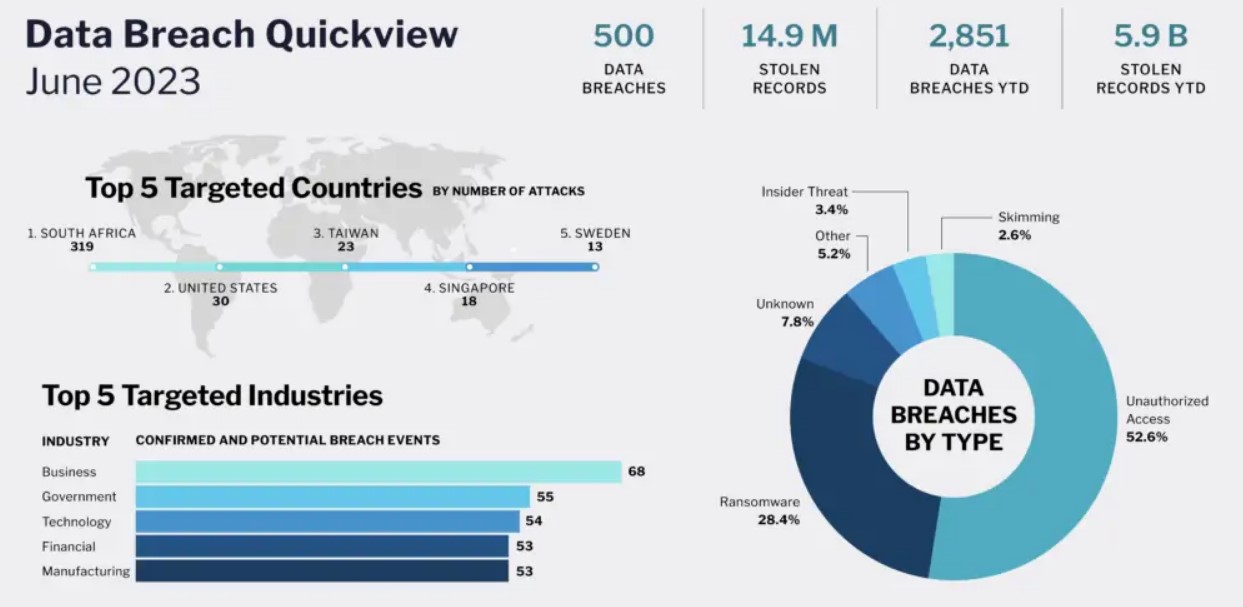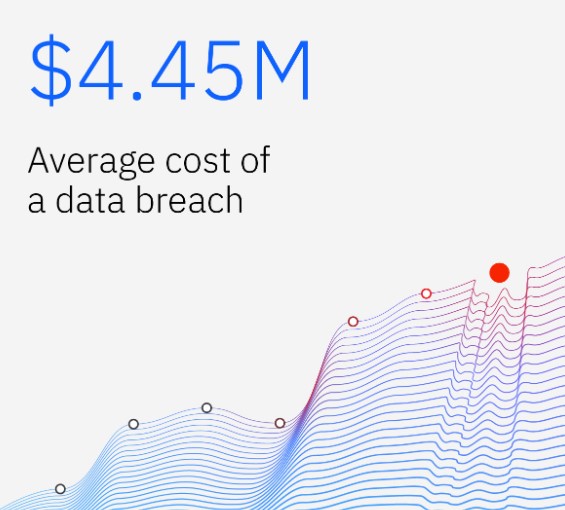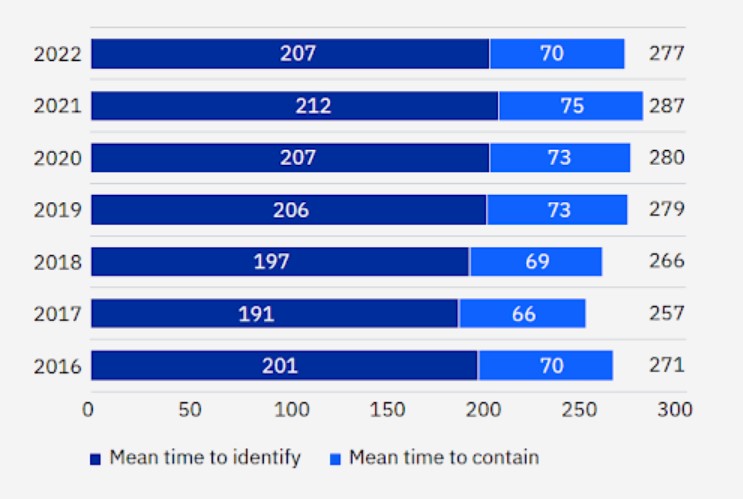According to the cost of data breach report 2023 by IBM, the average cost of data breach is $4.45 million, 15% increase from 2020. For some context, the average cost of data breach was $4.35 million in 2022. When it comes to industries, healthcare continues to dominate the rankings with data breach costs surging to $11 million, a shocking 53% increase in the costs from 2020.

The 2023 Cost of a Data Breach Report sheds light on the current state of cybersecurity and highlights the critical areas businesses and cybersecurity professionals need to focus on. Let’s delve into the seven key takeaways that can help your organization fortify its defenses and protect sensitive information.
- 7 Key Takeaways From Cost of Data Breach Report 2023
- 1. Escalating Costs of Data Breaches
- 2. Ransomware Remains a Menacing Threat
- 3. The Role of Human Error
- 4. The Impact of Remote Work on Security
- 5. Swift Detection and Response Matters
- 6. Third-Party Risks are on the Rise
- 7. Compliance Alone is Not Enough
- Conclusion
7 Key Takeaways From Cost of Data Breach Report 2023
Here are seven key takeaways from the cost of data breach report 2023.
1. Escalating Costs of Data Breaches
The report highlights an alarming trend of escalating data breach costs in 2023 compared to previous years. The average cost of a breach has significantly risen due to complex cyber-attacks, the value of stolen data, and expenses involved in containment and recovery.
It is crucial that we shift our cybersecurity strategy by allocating adequate resources to robust security measures, training, and incident response plans. This proactive approach will help mitigate the financial impact of potential breaches and safeguard our organization’s sensitive information, maintaining trust with customers and stakeholders. Collaboration across all departments is essential to fortify our defenses and stay ahead of evolving cybersecurity risks.

2. Ransomware Remains a Menacing Threat
One of the most startling findings of the report is the continued prevalence of ransomware attacks. These malicious cyber-attacks cripple businesses by encrypting critical data and demanding hefty ransoms for its release. Cybercriminals have become increasingly sophisticated, often targeting organizations with weak security postures. To counter this threat, businesses must adopt a proactive approach, ensuring regular backups, robust network segmentation, and continuous monitoring of network traffic to detect and prevent ransomware attacks early..

3. The Role of Human Error
Despite advancements in cybersecurity technologies, human error continues to be a significant factor in data breaches. Misconfigured cloud services, unintentional disclosures, and falling victim to social engineering attacks are just a few examples of how employees can inadvertently compromise an organization’s security. Raising cybersecurity awareness through comprehensive training programs and implementing security best practices can help reduce the risk of human-induced breaches.
4. The Impact of Remote Work on Security
The global pandemic accelerated the adoption of remote work, presenting businesses with unique cybersecurity challenges. The report highlights that remote work environments have increased the likelihood of data breaches. Employees connecting from unsecured networks and using personal devices for work tasks can be potential entry points for cyber attackers. Businesses must implement robust remote access solutions, multi-factor authentication, and enforce strict security policies to secure remote work environments effectively.
5. Swift Detection and Response Matters
The report emphasizes the crucial role of swift detection and response in minimizing data breach costs. Organizations with efficient incident response teams can detect breaches faster and mitigate their impact before they escalate. Automation and AI-driven technologies can enhance response times by swiftly identifying suspicious activities and anomalies within vast datasets, enabling cybersecurity professionals to act proactively against threats.

6. Third-Party Risks are on the Rise
As businesses increasingly collaborate with third-party vendors and partners, the report underscores the growing importance of managing third-party risks. Cybercriminals often target vendors as a stepping stone to breach larger organizations. Therefore, businesses must thoroughly vet their vendors’ security practices, establish clear contractual obligations regarding data protection, and conduct regular security assessments to ensure third-party security compliance.
7. Compliance Alone is Not Enough
While regulatory compliance is crucial, the report cautions that adhering to minimum requirements may not suffice in safeguarding against advanced cyber threats. Cyber attackers continuously evolve their tactics, and businesses must go beyond compliance standards to implement robust security measures. Proactive security monitoring, threat hunting, and investing in emerging security technologies are essential components of a comprehensive cybersecurity strategy.
Conclusion
The 2023 Cost of a Data Breach Report serves as a wake-up call for businesses and cybersecurity professionals. The evolving cyber landscape demands a proactive and adaptive approach to data security. By understanding these key takeaways and implementing relevant security measures, organizations can strengthen their defenses, protect sensitive data, and stay one step ahead of cyber threats. A collective effort to prioritize cybersecurity is the key to a safer digital future for businesses and their customers.
What did you learn from the cost of the data breach report 2023? Share it with us in the comments section below.





Add comment